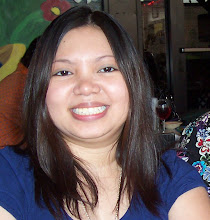
Publisher: Barnes & Noble
Pub. Date: August 2004
First Publication Date: 1859
ISBN-13: 9781593081386
Pages: 404
Rating: 5 out of 5
Pub. Date: August 2004
First Publication Date: 1859
ISBN-13: 9781593081386
Pages: 404
Rating: 5 out of 5
Summary: A Tale of Two Cities is set in London and Paris before and during the French Revolution. It is the story of the French peasants who suffered under the French aristocrats. England provided as a refuge for the oppressed French yet the social injustices towards the poor in England were no different. In the French Revolution, the aristocrats were brutalized by the revolutionaries who made them pay heavily for their lives.
Review: What an excellent book! After reading, I was really surprised how this became one of my favorite books. However, it didn’t seem that way in the beginning. It started out slow, and I felt that Charles Dickens can be overly descriptive in his scenes. This was his way of laying the groundwork of the story. It worked for me (and the story, of course) because I was hooked.
The book was divided into three parts. In part one, the characters were introduced, and the setting was before the French Revolution. In part two, more characters came into play and events slowly led towards the revolution. Finally, part three was set during the French Revolution, and I thought this was the most exciting and suspenseful part of the book.
The story was more than just about the madness that led to the chaotic French Revolution. As I read on, I discovered that it was also about second chances. One of the characters who experienced this was Dr. Manette. He was released after being in jail for eighteen years. He was traumatized so severely that his mental state deteriorated. With the love and support he received from his daughter Lucie, he slowly recovered.
Charles Darnay started over with his life by denouncing his French aristocratic family. Like Dr. Manette, he went to live in England to leave his past behind.
I also came to love all the characters in this book, but I was mostly impressed with Sydney Carton. He became my favorite. He wasn’t perfect, but he, nonetheless, had a good heart. His love for Lucie was rivaled by Charles, the virtuous gentleman. Ah, to love someone you can’t have. I really felt for Sydney. That’s probably why I had a soft spot for him.
The description of how the poor and the prisoners were brutalized was gruesome. Honestly, I had second thoughts about continuing, but my curiosity got the best of me. I thought that perhaps Dickens felt that he had to write these horrific descriptions because he wanted the readers to understand why the revolutionaries were so angry and vengeful towards the aristocrats.
Even though some parts were gross, I got past it because the story was getting better, and I was eager to see how the ending was going to be. Still, I shivered when I read that women, men, young or old, peasant or not were “all red wine for La Guillotine….Liberty, Equality, Fraternity, or Death; the last much easiest to bestow, O Guillotine!”
The ending was astonishing. I shouldn’t have been surprised because there had been some foreshadowing. I was equally shocked as the story revealed how and why Dr. Manette was jailed, why Charles Darnay never hesitated to denounce his family, and how Madame Defarge became such a vindictive, evil character. I was really sad at the ending. Yet, it had so many twists that I wasn’t disappointed with the whole book. There’s no doubt in my mind why this was one of the best classics ever written.
Recommendation: If you’re looking for a serious book with powerful themes, this is it. Be prepared though because some descriptions can be disturbing.


So glad you joined the 100+ Reading Challenge! Best of luck...it's gonna be fun! :)
ReplyDelete